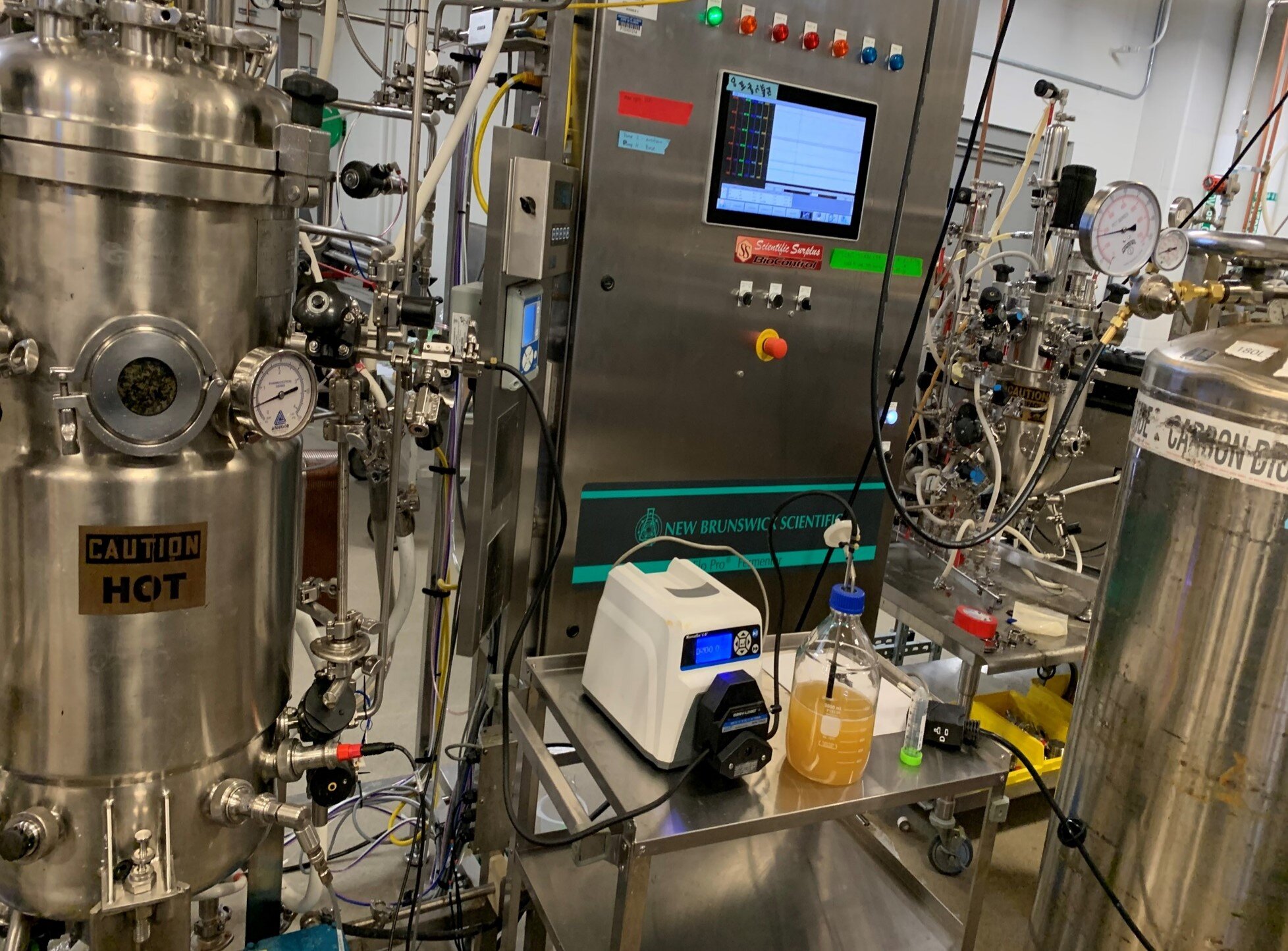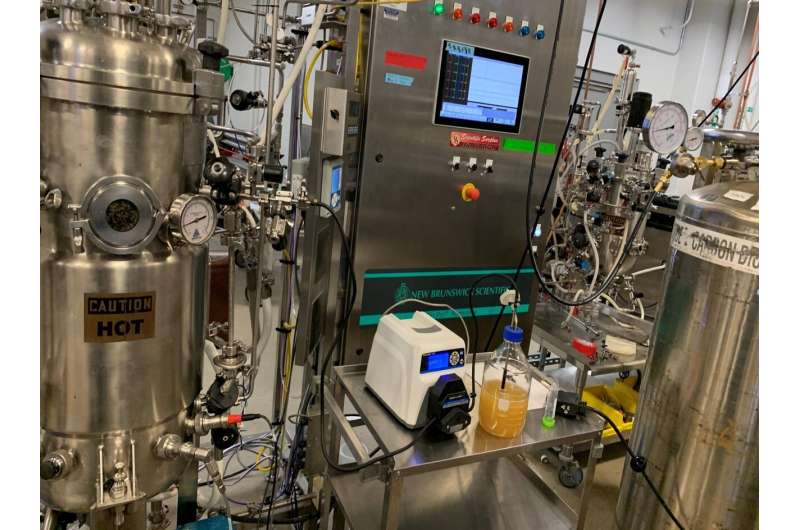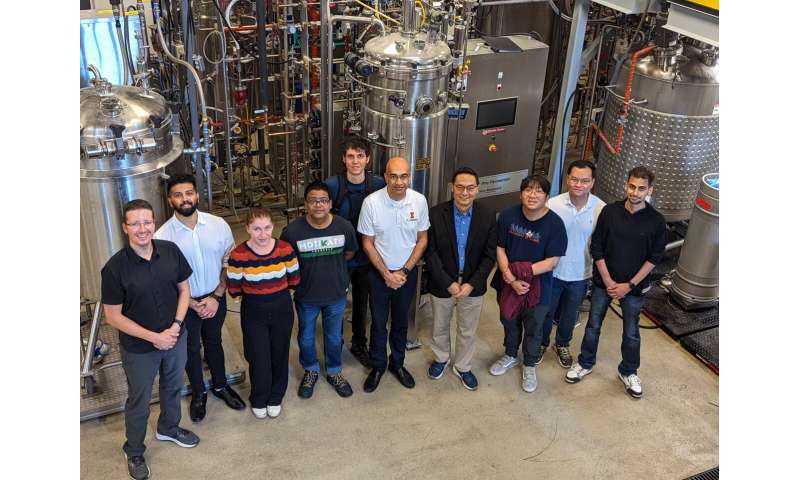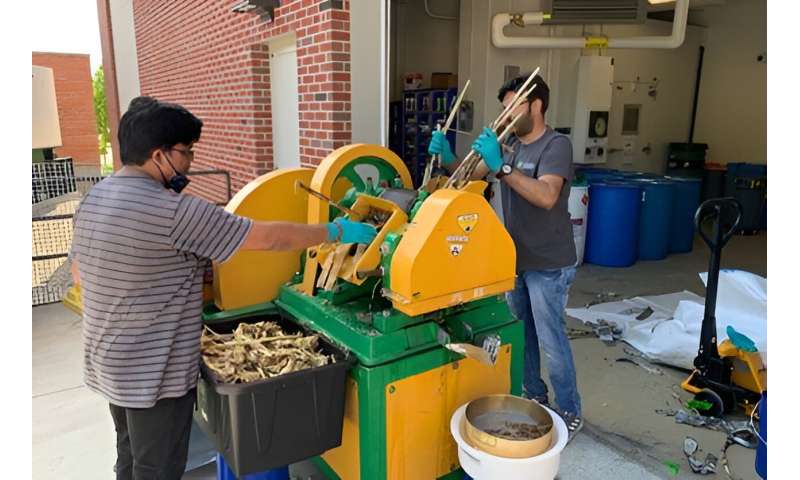

In a breakthrough for environmentally friendly chemical production, researchers at the Center for Advanced Bioenergy and Bioproducts Innovation (CABBI) have developed an economical way to make succinic acid, an important industrial chemical, from sugarcane.
The team of University of Illinois and Princeton University researchers created a cost-effective, end-to-end pipeline for this valuable organic acid by engineering a tough, acid-tolerant yeast as the fermenting agent, avoiding costly steps in downstream processing. Succinic acid is a widely used additive for food and beverages and has diverse applications in agricultural and pharmaceutical products.
This same pipeline can be used to produce other industrially important organic acids targeted by CABBI in its work to develop sustainable biofuels and biochemicals from crops, said co-author Huimin Zhao, CABBI’s Conversion Theme Leader and Professor of Chemical and Biomolecular Engineering (ChBE) at Illinois. To reduce reliance on fossil fuels, Conversion researchers are deploying microbes to convert plant biomass into chemicals used in everyday products as an alternative to conventional petroleum-based production.
“This will serve as a blueprint for all the other metabolic engineering products in CABBI,” said Zhao, one of several CABBI principal investigators on the project.
The study is published in Nature Communications, and the work builds on years of research on succinic acid production by Zhao and his colleagues using Issatchenkia orientalis, an unconventional yeast ideal for making organic acids.
I. orientalis has the unique ability to thrive in low-pH, or acidic, conditions. Most organisms require a neutral pH environment to survive, including Saccharomyces cerevisiae, a more conventional yeast, or Escherichia coli bacteria. Both have been used by companies and labs to produce succinic acid but proved to be too costly, so efforts to scale up production have failed, Zhao said.
Those microorganisms require the addition of a base to neutralize the toxic acidic conditions so they can continue making succinic acid. But that generates side products, such as gypsum or calcium sulfate, which have to be separated out at the end of the pipeline to purify the product, driving up downstream processing costs.
“One of the bottlenecks in the production of organic acids is the separation cost,” Zhao said. “We have to add a lot of base to keep the pH near neutral, between 6 to 7.”
With I. orientalis, however, “the organism lives happily at a pH of 3 to 4,” so the additives are not required, Zhao said. “In the end, that significantly reduces costs.”
The CABBI researchers also did extensive metabolic engineering to rewire I. orientalis to produce robust levels of succinic acid—higher than either S. cerevisiae or E. coli, he said. Using metabolic flux analysis from Rabinowitz’s lab, they identified the steps in the yeast’s metabolism that limited the production of succinic acid. One key roadblock: Native I. orientalis can’t utilize the sucrose from sugarcane. So an enzyme was added that could break down sucrose from the sugarcane juice into glucose and fructose to make succinic acid. Other genes were introduced to overproduce succinic acid.

Credit: CABBI Communications 
Credit: Center for Advanced Bioenergy and Bioproducts Innovation (CABBI)
Working with Singh’s group at IBRL, the team then scaled up succinic acid production using industrially relevant equipment to conduct an end-to-end integration of the process. The pilot-scale work showed the new strains could produce up to 110 g/L of succinic acid and, after batch fermentation and downstream processing, an overall yield of 64%—impressive results having commercial significance, Singh said.
The combination of higher production levels through genetic engineering and lower costs from the elimination of downstream separation makes the process “very attractive,” Zhao said. “That’s why the pipeline is so economical, at least at this pilot scale.”
The final step was working with Guest to simulate a full end-to-end, low-pH succinic acid production pipeline, using the open-source software platform BioSTEAM developed by his group. The techno-economic analysis (TEA) and life cycle assessment showed the process was financially viable and could reduce greenhouse gas emissions by 34% to 90% relative to fossil fuel-based production processes.
“These advancements in metabolic engineering could have large-scale benefits, simultaneously driving down costs and environmental impacts in support of a circular bioeconomy,” Guest said.
The process emits less carbon dioxide (CO2) than conventional petroleum-based chemical processing. Plants like sugarcane also soak up carbon, and CO2 can be used as a substrate for the process, further reducing its carbon footprint.
“It’s definitely more environmentally friendly. That’s the premise for all the research in CABBI: using renewable resources to make chemicals and fuels,” Zhao said.
Researchers plan further scale-up studies soon to support commercialization of the succinic acid production process.
The work will also be a template for production of other CABBI products using I. orientalis, including 3-hydroxypropionic acid (3-HP). The market for 3-HP, used in components of disposable diapers and sealants, exceeds $1 billion, and research to date shows huge promise, Zhao said.
“We expect I. orientalis can serve as a general industrial platform for the production of a wide variety of organic acids,” said Vinh Tran, primary author on the paper and a Ph.D. student in ChBE.
The project involved several lab groups and contributions from all three themes of CABBI’s research—using sugarcane juice from the Feedstock Production research team, metabolic research and bioprocessing facilities from the Conversion team, and economic and environmental analysis from the Sustainability team.
Co-authors included CABBI researchers Sarang Bhagwat of CEE and Yihui Shen of the Department of Chemistry at Princeton; Somesh Mishra of ABE; Saman Shafaei, Shih-I Tan, Zia Fatma, and Benjamin Crosly of ChBE; and Jayne Allen of CEE.
More information:
Vinh G. Tran et al, An end-to-end pipeline for succinic acid production at an industrially relevant scale using Issatchenkia orientalis, Nature Communications (2023). DOI: 10.1038/s41467-023-41616-9
Provided by
University of Illinois at Urbana-Champaign
Citation:
New pipeline makes valuable organic acid from plants—saving money and emissions (2023, October 3)
retrieved 3 October 2023
from https://phys.org/news/2023-10-pipeline-valuable-acid-plantssaving-money.html
This document is subject to copyright. Apart from any fair dealing for the purpose of private study or research, no
part may be reproduced without the written permission. The content is provided for information purposes only.



